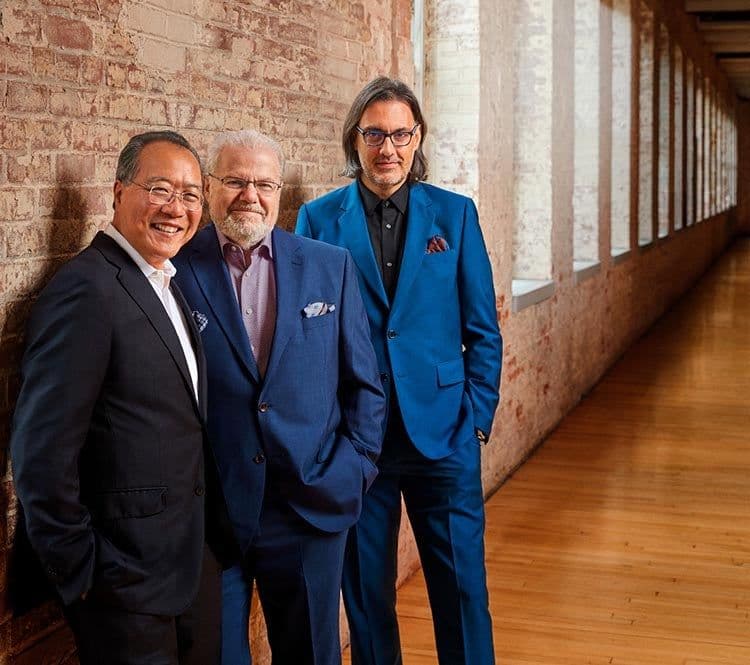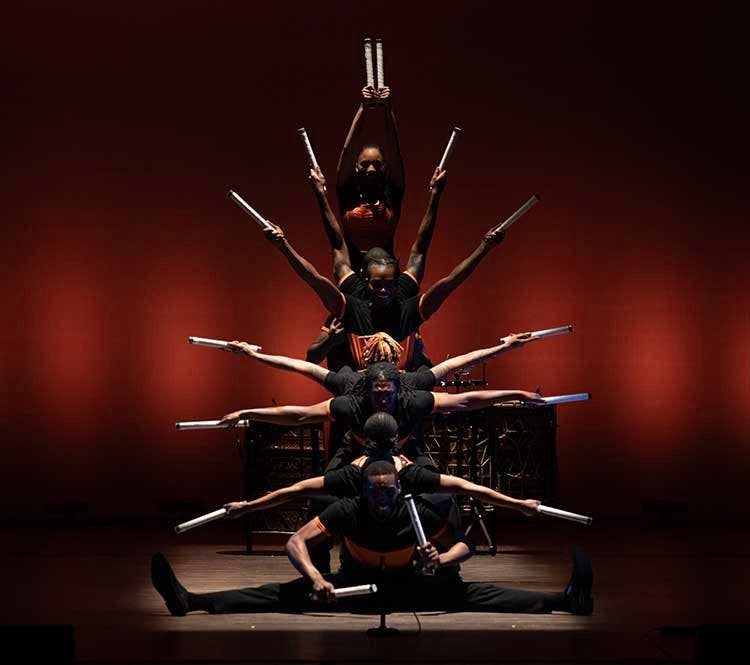Beethoven’s Opus 70 piano trios (piano, violin, violoncello) form the first and third works on this program. They are among Beethoven’s middle-period masterpieces. They were composed fourteen years after his first major composition for this instrumentation. During those years, numerous innovations affected not only the style of his compositions but also the instruments themselves. Beethoven was well aware of the effect of technological developments on his music. A piano virtuoso, he appreciated that the pianos of 1808 were much stronger physically, more sonorous, and had greater capability for sustained pitches than earlier models. The stringed instruments also had become stronger, more capable of sustained pitches, and able to execute more types of articulation. The combination of stronger piano and stronger stringed instruments allowed him to free the cello, in particular, from its subordinate time-honored role, in which it served primarily to reinforce the older pianos’ weak lower octaves. Instead, the stringed instruments now became independent partners for the keyboard.
It should be noted that public concerts were quite rare at this time. Most music was performed at home or in salons by professional musicians and well-trained, gifted amateurs and music lovers, who eagerly bought new music as soon as it was published. The Beethoven trios were a part of this beloved tradition of high-level music making, the daunting nature of which will be heard in this performance.
Beethoven’s Opus 70 trios were a new force in the world of chamber music, given both the technological advances and his own self-confident maturity as a composer. They were sketched and completed in 1808. The first private performance was at the home of his Viennese mentor, Countess Anna Maria Gräfin Erdődy (née Comtesse Niczky Dame de la Croix, 1778-1837). The first public performance was in April 1809, with publication that same year.
Op. 70, No. 1, in D major, acquired the nickname “Ghost Trio” later in its history. Beethoven did not provide the name. It comes from the second movement, which has a most unusual atmosphere. (Later, scholars found that Beethoven had sketched these themes to appear in the witches’ scene of a proposed opera based on Macbeth). The Trio is immediately innovative for its use of three movements rather than the four common to virtually every large-scale work of the day. The first movement opens with a scale pattern played in unison, followed by a lyrical section in which the cello’s F natural (not in the key signature) plays an important, disruptive role. The piano’s strong rhythmic passages are often in opposition to the strings’ united statements. The second movement, a set of variations on two inner themes, begins with a short, soft, slow pattern initiated by the violin. It is the slowest of any movement in all of Beethoven’s works. It hovers mostly in the low register for some time, with rumbles in the piano and some wailing in the cello, followed by tremolos at the extreme ends of the piano, a wide range of string pitches, and an unsettled key progression. (The 19th century imagination found these characteristics to be “spooky”). The third movement is the most conventional, with a more stable (although far-reaching) key structure, and a clear exchange of thematic fragments. Use of the pizzicato strings near the end of the finale gives it a somewhat more whimsical character and lightens the drama of the second movement.
Opus 70, No. 2, in E flat, is a more genial work in four conventional movements. The first movement flows gently from a slow introduction into an “allegro” section, without the usual abrupt change of tempo. That melody flows into a waltz-like section before the first theme recurs, with an amusing declaration of the key of D-flat in the cello, only to be overridden by a firm E flat in the piano. The second movement includes a quotation from Joseph Haydn’s Symphony No. 103, H. I/103, “Drumroll.” Where Haydn begins in C minor and moves to C Major, Beethoven reverses the direction, and creates a vaguely Hungarian dance theme out of his melody, with a “Scottish snap” toward the end. The third movement was sketched as a minuet but uses an “Allegretto ma non troppo” (“Fast but not too fast”) designation instead. Another Haydn quotation, from his Symphony No. 88, H. I/88, is featured. The finale uses phrases from the preceding movements, with an abrupt pianissimo section followed by exciting scale passages to complete the work.
The middle portion of tonight’s concert features the Trio in Beethoven’s Symphony No.1 in C major, Op. 21, originally published in 1801 and dedicated to his patron Baron Gottfried von Swieten (1733-1803.) The trio arrangement is by pianist Shai Wosner (1976-present), a faculty member (and graduate) of The Juilliard School. He has arranged several Beethoven symphonies, following a suggestion from his colleague Emanuel Ax. Transcriptions and arrangements were very popular in the 19th and early 20th centuries, before the advent of recordings and of public concerts at reasonable prices in more than just the greatest cities of the world. Anyone wishing to know the works of Beethoven, for example, would look for transcriptions of the major pieces, especially those that suited the available instrumentation. Beethoven arranged his own second symphony for a trio, and Haydn was a master at it, even arranging his “Seven Last Words of Christ on the Cross” as a string quartet, an oratorio, and approving a piano transcription—all after he fulfilled the original commission for string orchestra. Often, composers did this not only to make some extra money but because they believed they were best qualified to make a new version that would be true to the original conception. With Beethoven, although his orchestra in 1800 was about the same configuration as that of Mozart or Haydn, he was exploring new ways of writing for the instruments—new harmonies, new instrumental effects, and again taking advantage of new technological developments. In four movements, Symphony No. 1 is often seen as a bridge between the Classical period and the early so-called Romantic period. Despite its charm and energy, it is one of the least well known of the Beethoven oeuvre. Converting the intricacies of an orchestra to a piano trio is a major accomplishment. All the themes and construction of the movements are intact and even concentrated in detail. The audience should ideally listen to this presentation as a free-standing work for piano trio in order to appreciate its unique qualities.
—Mary Black Junttonen, MSU Music Librarian Emerita
More about Beethoven’s Symphony No. 1 arrangement:
The Journey Begins
Beethoven’s first symphony starts off with the wrong chord. Two chords, in fact: one long, one short and both out of place—they sound like an ending, not a beginning. The movie opens with the “The End” slide. Then another pair of chords is introduced but this time the effect is very different, even a tad melancholy—not quite another false start, yet still followed by silence. (Beethoven is too good to tell the same joke twice). Two more chords after that finally open up the way forward and the whole piece unfolds.
We often think of Beethoven as an unrelenting idealist (which he was) but in this symphony he isn’t necessarily out to change the world. More ambitious, more dramatic, more groundbreaking (and more famous) ones will follow, full of idealistic fervor. But don’t mistake this one for anything less than original or forward-looking.
In fact, those chords in the introduction encapsulate both where he comes from as an artist and where he is going. The faux-ending bit comes from his teacher Haydn of course—the greatest master of subversive wit, who liked to break the fourth wall, musically speaking, by defying ‘proper’ beginnings and endings. But it’s the subsequent series of chords that reveals the essence of Beethoven’s art, a prime example of how his source material lies not in ornate melodies or grandiose effects but rather in the most basic components of music—in this case just unadorned chords—which dissolve into one another like in some miraculous chain reaction between elements in nature. Indeed, the main theme that drives the whole 1st movement is not a catchy tune (there will be plenty of those later in the symphony) but chords that stretch and pull as if by some mysterious, magnetic force from which Beethoven extracts exhilarating energy. Chiseling ideas out of music at its most elemental—out of its very building blocks—will remain a defining principle of his creative genius for years, a thread that runs through the symphonies, from the youthful vigor of the very first to the explosively powerful statements yet to come.
—Shai Wosner




